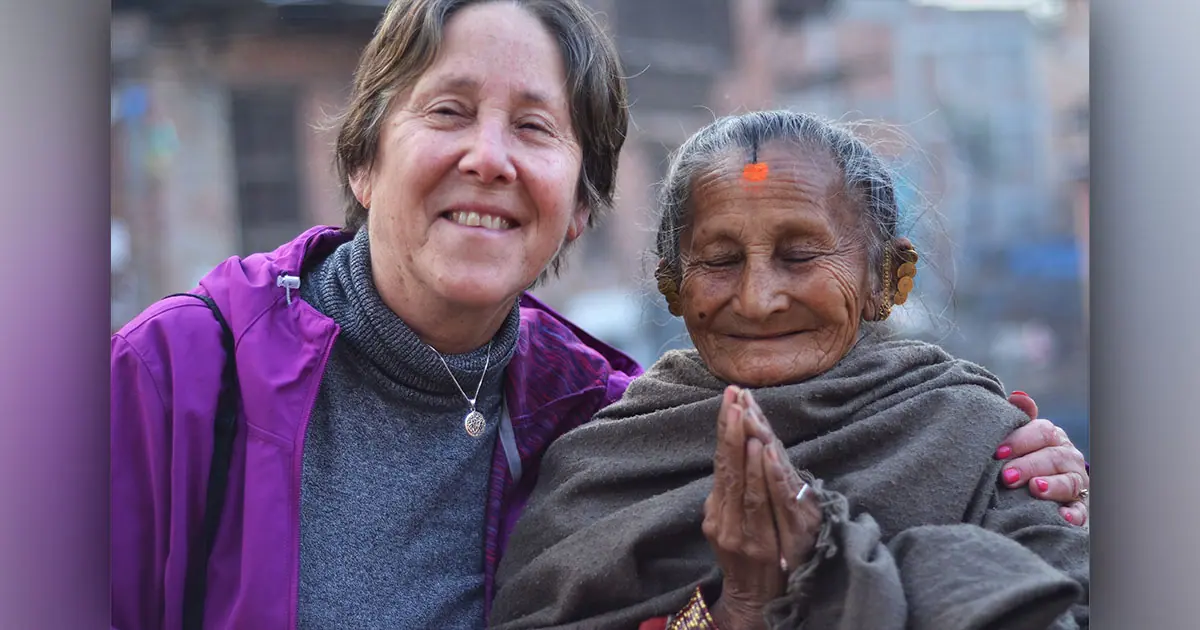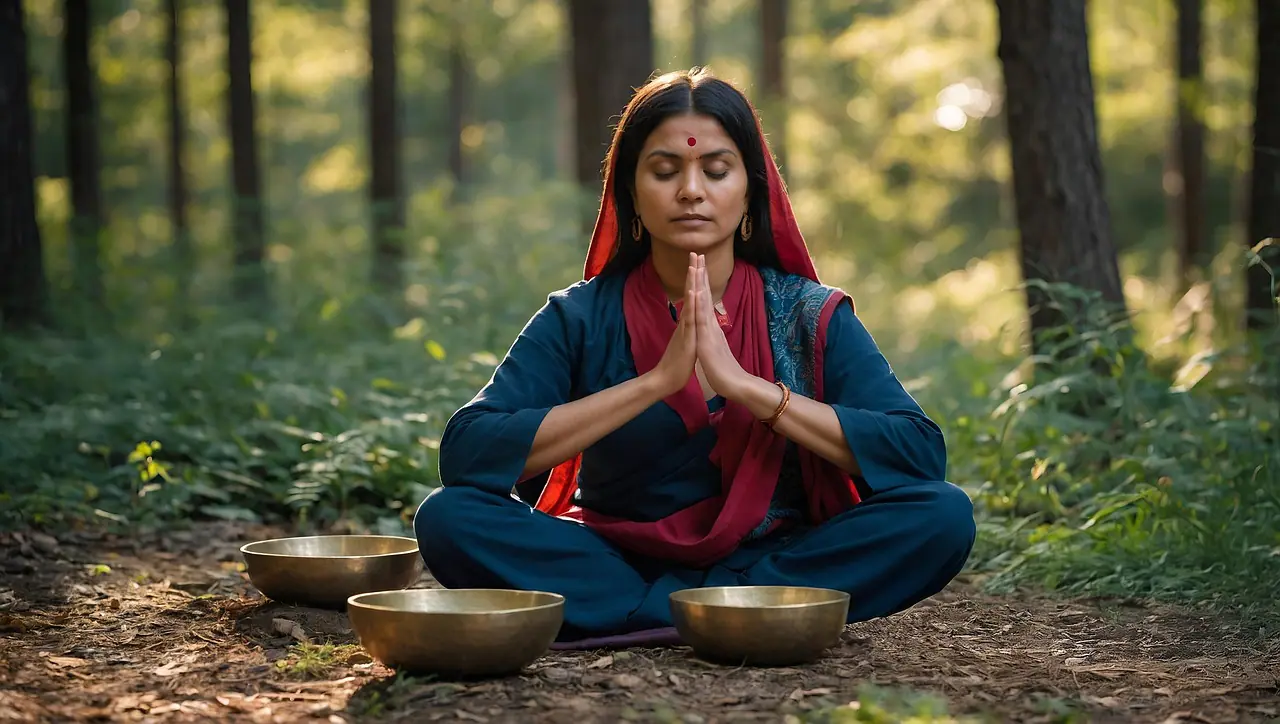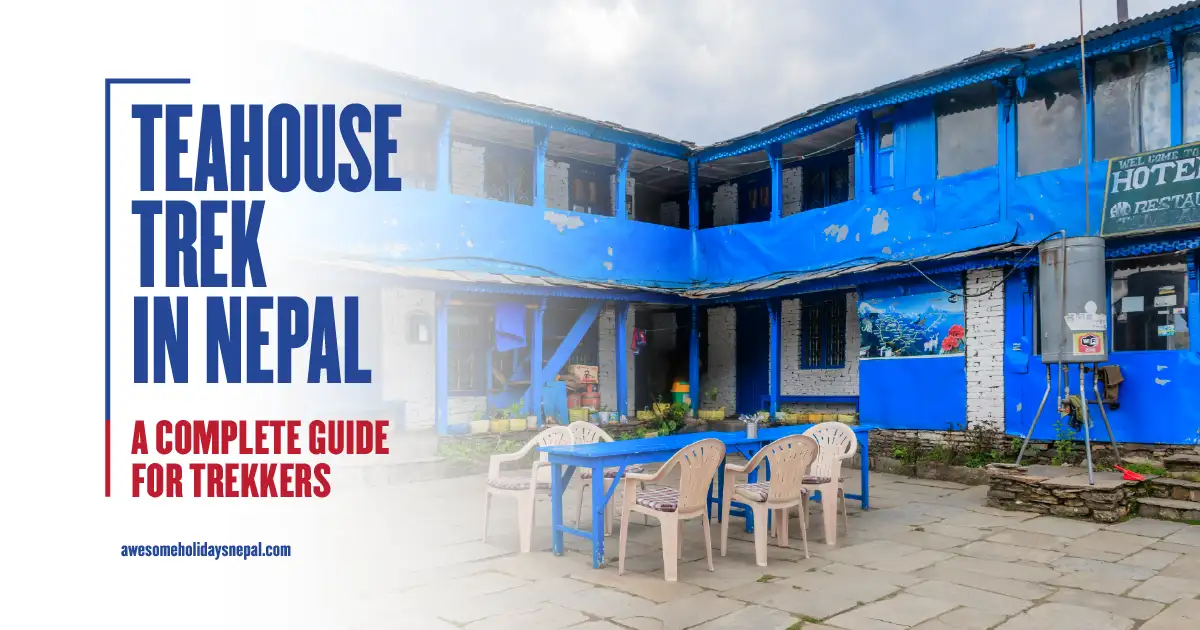What Does Namaste Mean: Interpreting the Nepalese Salutation

“Namaste.” Have you ever heard this word or seen someone greet you with adjoined palms and a slight bow while strolling through the streets of Nepal? If yes, then you have received the warmest and most respectful greeting of the Hindus.
But what does namaste mean?
Well, it’s quite simple, yet challenging to understand the meaning of this most respectful Nepalese salutation. To break it down, doing a Namaste is like saying “Hello” in English culture and an “Aadab” in Urdu but with a little Hindu twist.
Let’s dive deeper into the culture and history of Nepal to learn what Namaste means in reality!
If you want to know more about Nepalese traditions, read the blog on festivals celebrated in Nepal:
Namaste: Warmth of Nepalese Welcome
There is no doubt that Nepali people are the most humble and welcoming when it comes to hospitality. These people believe in the saying “A guest is a god” and that preaching can be evident in their life practices and behavior.
And this begins with their subtle way of greeting, the Namaste. It is a customary greeting for anyone you respect and honor. Sometimes, people even use the word “Namaskar” instead of Namaste as both are synonymously prevalent in the community. Let’s know namaskar meaning as well, it comprises of words “namas” and “kara”, that translates to “doing”. So, it has same meaning as Namaste.

And let me remind you that the act of doing a namaste can mean different things at different scenarios. The same namaste can be a hello, a respectful acknowledgement of your presence or a good bye depending on what you use it for.
History Behind the Origin of Namaste
Namaste actually originated from the Sanskrit words “nama” and “te,” which mean bow and to you, respectively. Hence, together, the meaning of Namaste is “I bow to you,” which you say to show respect and reverence towards other people. According to the books, it means “I bow down to the divinity in you.”
But there is no legend or story behind how it came into practice. Whether it’s a younger or an older person, you will always receive a Namaste when you meet or part ways.
Different Meanings of Namaste
So far, it’s evident that the word “Namaste” can be used in multiple situations, and the reason behind this is different interpretations of the single word.
Cultural Interpretation
Culturally, Namaste is a greeting that signifies respect and reverence. People also use it as a welcoming gesture, a hello when you meet someone, and a goodbye while particles. Despite people with different cultures, traditions, and diversity, Namaste is a common word everyone uses.
Spiritual Significance
Hindu mythology believes that every being on earth has divinity within it, whether it’s a rock, a tree, an animal, or a person. That’s why Hindus say “Namaste,” addressing the divinity in the person in front of them.

Simply put, namaste is a symbolic act in which one soul acknowledges the soul of another person. It promotes humility, respect, and a feeling of unity among the people.
How and When to Use Namaste?
Despite being simple gesture, the way of doing namaste means different things. If you just say the word then it’s just a normal Hi/Hello kind of a greeting but, if you fold the hands and bow down a little it becomes a little respectful.
Often people do Namaste with respect usually while greeting seniors or while doing a formal greet. Apart from greeting, people also fold their hands while praying to God. This doesn’t only mean honoring or paying tribute to God but also acknowledging the good soul within yourself.
Other Nepalese Greetings and Salutations
Since Nepal is a multi-cultural country with diverse races and ethnicities, greetings and salutations also vary widely. Some of the most common greetings and the ethnicity that use them are described below. If you want to learn about the cultural practices of Nepal check our blog on “Religions in Nepal“.
Some Ethnic Greetings:
Darshan
Like Namaste, Darshan is a very respectful salutation frequently used in Nepal. People of Thakuri origin mostly use this word to greet people whom they need to respect, including younger ones. This form of Namaste sounds a little better and is often royalty, so many people use it frequently to represent class in their greetings.
While doing Darshan, you just use your right hand and curve it a little by pressing it with your thumb, then bowing your head a little to show respect. Usually, you will find people in the western region and some communities in the Kathmandu valley use this gesture.
Jojalopa
While traveling to Nepal, especially in Kathmandu or Bhaktapur, the places inhabited by Newars, you will often find people using the term “Jojalopa” i.e.ज्वजलपा in Nepali. It is equivalent to a Hi or Hello in English and means Namaste if translated to Nepali. In fact, it is also considered a respectful salutation in Newari and is often used with people whom you need to honor or in formal communications.
Some people also use the word “Taremam” i.e. तारेमाम to greet people when they meet. But this term is considered a little more informal way of greeting and generally used with young ones or friends.
Salaam
Muslim people residing in Nepal often use Salaam instead of Namaskar or Namaste to greet each other. People in this community often hug each other when they meet people or just say Salaam slightly cupping their hands and moving it close to their head.
Ram Ram
People of Madhesh and Tharu community often use “Ram Ram” along with Namaste to greet people when they meet. For informal greeting they just say the word while to make it sound the people also join their hands and bow a little as if they were doing a namaste buy say Ram Ram instead.
They also use this word to greet good bye when they leave. So its safer to say it’s meaning is similar to the meaning of namaste.
Tashi Delek
Mostly the people of Tibetan Buddhist origin say “Tashi Delek”, i.e. བཀྲ་ཤིས་བདེ་ལགས་ instead of Namaste while greeting someone. Not just a Hello, the greeting means wishing you good fortune, peace, and happiness. This is a reason why people use Tashi Delek while doing a normal greet or expressing well wishes on different occasions.
Sastang Dandavat Pranam: The Sanskrit Salutation
Satang Dandavat Pranam is a very strong expression of humility and devotion to greetings and salutations. You should offer this pranam only to polished gurus or someone whom you dearly respect. It is actually a way of devoting yourself to someone whom you consider divine or to a god.
To break down this salutation, it comprises of three Sanskrit words: “Sastang,” which means eight-fold; “Dandavat,” which means like a stick; and “Pranam,” which means to “bow”. Together, the word refers to how you perform it using your whole body.

To do a Sastang Dandavat Pranam, you lay flat on the ground with your knees, chest, elbows, and forehead touching the ground. And your palms are raised forward and joined like you do while doing a Namaste. Only the Hindus perform this salutation, and its generally men. The legends say that women shouldn’t perform this salutation.
Pranam
Pranam is a word that people use synonymously with Namaste, as it means the same. It also means bowing to someone with respect, and some people actually bow slightly while doing pranam.
People of Indian origin usually use Pranam in Nepal, and some religious institutions, like “Om Shanti,” use it. However, most Nepali people prefer to say “Namaste” or “Namaskar” instead of Pranam.
Besides, the yogis also join their palms and do pranam while performing different yoga postures. These postures are
Some Must Know Vocabs of Nepali Language
It is true that most people, especially those associated with Tourism, understand and speak English, the global language. But whenever you visit a new country, learning a few slangs, basic greetings, and dialects helps a lot.
If you are planning to visit Nepal this year, it’s better to learn a few of these vocabulary words. Here’s a list of a few of these and what they mean:
- Namaste: It means Hello and Welcome.
- Dhanyawad: It means Thank you.
- Swagatam: It means welcome.
- Ramro cha: It means good or it looks good.
- Ramailo cha: It means it’s fun and entertaining.
- Kripaya: It means Please.
- Pheri Bhetaula: It means See you again.
There is even so much more to know, but you will learn it once you come to Nepal and are accompanied by Nepali guides and porters.
Take a Part of Nepal with You
Visiting a new place often brings a lot of memories, and of course, a part of the destination comes along with you, too. When you visit, learn the Nepali salutation and some sassy Nepali slangs to flex.
Not only will these help you communicate while on the trek but also often prevent you from the shame of saying anything wrong to people who assist you. Besides, learning a few thankful vocabs wouldn’t do a harm to anyone.
Keep enjoying the Nepali culture and hope you are clear on what does namaste mean!
FAQs
Expand AllWhat is the real meaning of Namaste?
The real meaning of Namaste is “I bow to you” or “Bowing to you”.
What does Namaste mean in Nepal?
Namaste means hello in Nepal.
Does Namaste mean peace?
No, Namaste doesn’t mean peace, but it does mean a peaceful gesture of greeting.
Is it Ok to say Namaste?
Yes, it is okay to say Namaste, as it is the most respectful from of greeting and salutation.
What is the exact meaning of Namaste?
Namaste actually means “I bow to you” or “Bowing to you”, and it is often used to greet, welcome or see off someone.
Is Namaste a Buddhist saying?
Namaste is a gesture meant for showing gratitude and it isn’t subjective to any specific religion. However, people belonging to Hindu, Buddhist, and Jain traditions do a namaste.
Who first said Namaste?
The origin of Namaste is unknown but several ancient books and Hindu scriptures such as Atharvaveda and Rigveda have mentioned namaste.
What does Namaste symbolize in yoga?
In yoga, Namaste symbolizes the profound gesture of respect and recognition of the divine goodness within oneself and others.
What is the origin of the word Namaste?
The word Namaste originated from Sanskrit.
What does Namaskar mean in Sanskrit?
In Sanskrit, Namaskar means bowing or homage.
Which is more formal: Namaste or Namaskar?
Namskar is said to be more formal than the Namaste.
Is Namaste religious or cultural?
Namaste is both religious and cultural.
What do you reply when someone says Namaste?
When Someone says Namaste, you should also reply back with Namaste.
Can non-Hindus or foreigners use the greeting Namaste?
Yeah, non-Hindus or foreigners can also use the greeting Namaste.
Why do people bow while saying Namaste?
People bow while saying Namaste to show a form of respect.
Related blog posts
Discover a choice of tourist destinations loved by most of our visitors. Whether you're on a jungle safari to spot rare animals or walking through a world heritage site, these well-planned itineraries cover the major highlights of Nepal.




